
Lizards Around Las Vegas, Wildlife Around Las Vegas
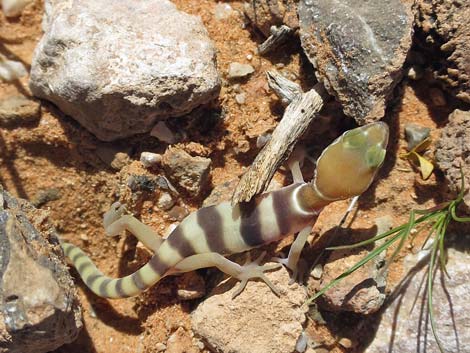 Adult Western Banded Gecko |
General Description: Western Banded Geckos (Coleonyx variegatus) are small, banded lizards with very fine scales and short, fat tails. In the eyes, the pupils are vertical, and the eyelids are movable. Geckos come out at night. Technical Description: Geckos are recognized by soft, pliable skin, fine scales, large eyes, and vertical pupils. This species is a medium-sized (total length 3 to 5 in.) lizard with protruding eyes, elliptical pupils, and movable eyelids. The dorsal coloration is cream or pinkish with brown cross-bands. The skin on the ventral surface is translucent, and some internal organs may be visible. The scales are uniformly granular and smooth. The toes are slender with nails, but they do not have the toe pads seen in other species of gecko. Unbroken tails are banded, sometimes swollen for fat storage, and easily broken. Broken tails tend to be unbanded (but may have speckling). Males have tiny spurs at the base of the tail. |
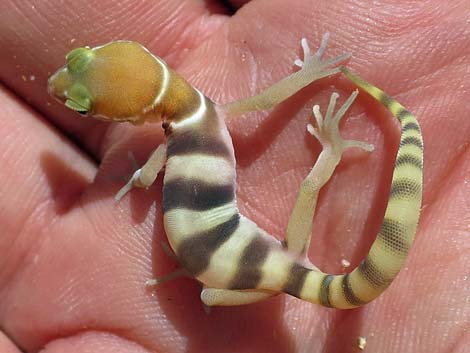 Desert Banded Gecko: dark bands equal light bands |
Taxonomy: Eyelidded Gecko Family (Eublepharidae). Formerly Ground Gecko Family (Gekkonidae). Five subspecies are recognized, two of which occur in Nevada: Desert Banded Gecko (Coleonyx variegatus variegatus) and Utah banded gecko (Coleonyx variegatus utahensis). In Nevada, the two subspecies are recognized by the banding pattern on the body. In the Desert Banded Gecko (C. v. variegatus), the dark band and the light bands are approximately equal in width. In the Utah banded gecko (C. v. utahensis), the dark bands are much wider than light bands. |
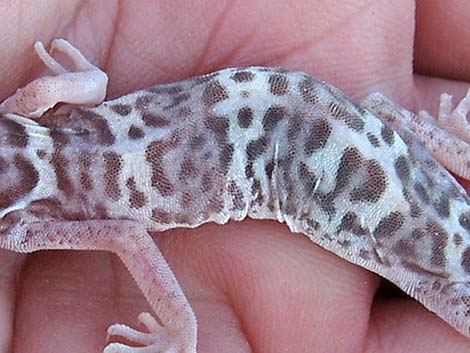 Utah Banded Gecko: dark bands wider than light bands |
Diet: Feeds at night, mainly insects and spiders. Habitat: This species is generally found in the Mojave Desert Scrub (Upper Sonoran Life Zone) where common plant species include Blackbrush, Honey Mesquite, and Catclaw Acacia. Less commonly, they are found in desert riparian areas and in areas up to about 5,000 ft in elevation in Pinyon-Juniper Woodland (Upper Sonoran Life Zone) with sagebrush. Rocks, crevices, fallen logs, limbs, and rubbish piles provide shelter. Range: This species is found throughout the southwestern deserts from southern Nevada southward to western Mexico. Two subspecies are recognized in Clark County, but the taxonomy is being revised. Under the original system, Desert Banded Geckos (C. v. variegatus) occur in western and southern Clark County, while Utah Banded Geckos (C. v. utahensis) occur in northeastern Clark County. In Desert Banded Geckos, the dark bands are equal to or narrower than the light bands, while in the Utah Banded Gecko, the dark bands are wider than the light bands, but this might just be regional variation in a single subspecies as there are intergrades. |
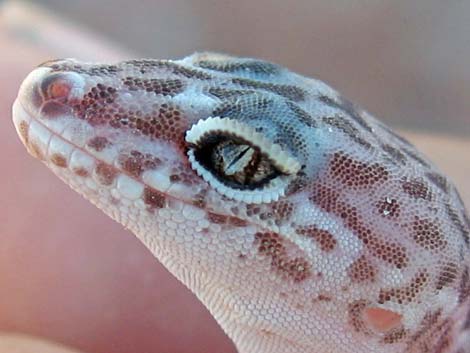 Eyes with vertical pupil |
Breeding: 1 to 3 clutches of 2 eggs each laid during spring through late summer. Similar Species: Banded Geckos are the only species of gecko native to Nevada; an introduced species, the Mediterranean Gecko (Hemidactlyus turcicus), is common around homes and yards in the Las Vegas Valley and can be recognized by the presence of white tubercles (warts) on the back. Two species of Afghan geckos have recently been introduced in the desert around Nellis Air Force Base. Comments: Primarily nocturnal. May vocalize by squeaking or barking when caught. |
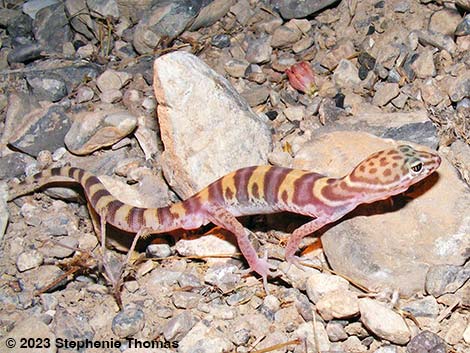 Dark bands equal light bands: typical Desert Banded Gecko |
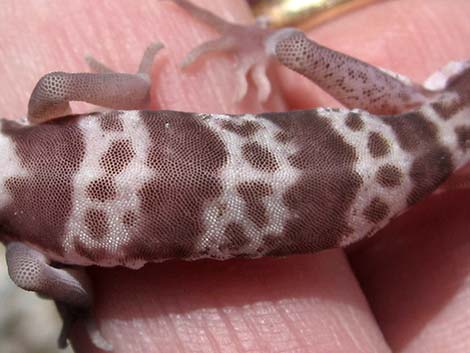 Dark bands equal light bands: typical Desert Banded Gecko |
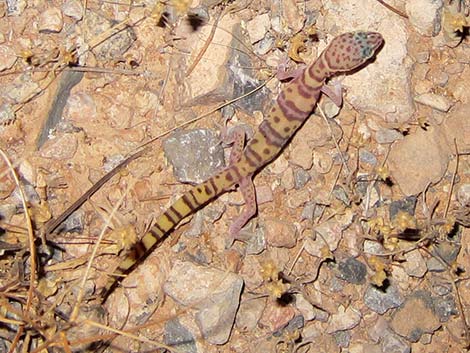 Dark bands equal light bands: typical Desert Banded Gecko |
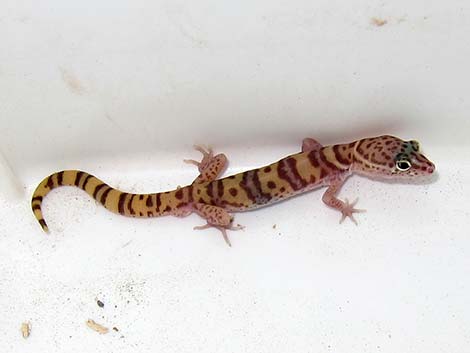 Dark bands equal light bands: typical Desert Banded Gecko |
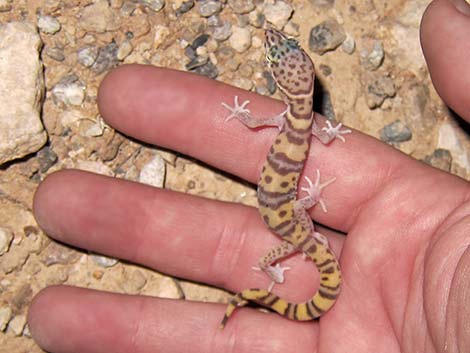 Dark bands equal light bands: typical Desert Banded Gecko |
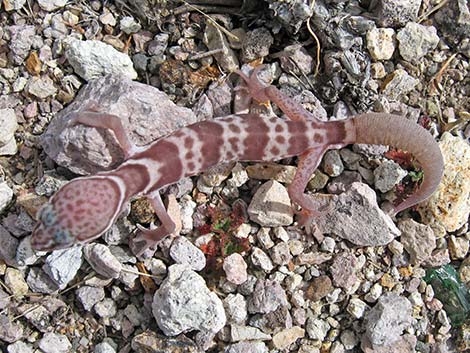 Dark bands equal light bands; regrown tail (not banded) |
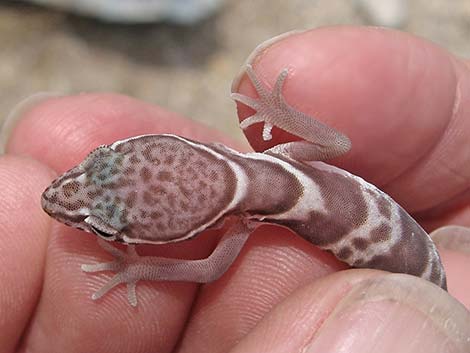 Broad head |
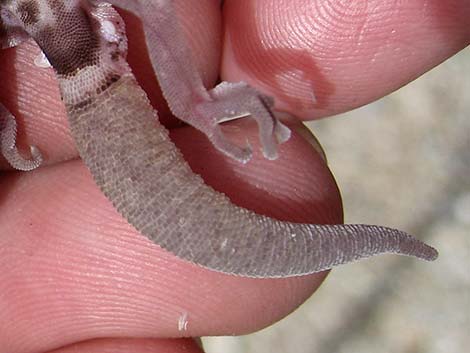 The swollen tail is a fat-storage organ |
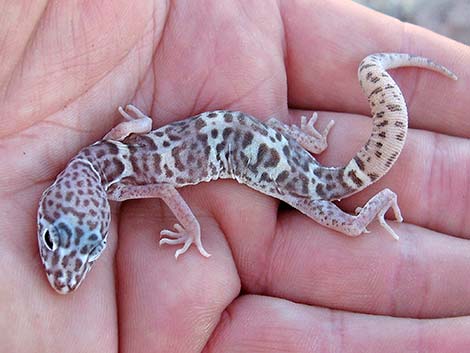 Dark bands wider than light bands: Utah Banded Gecko |
 Dark bands wider than light bands: Utah Banded Gecko |
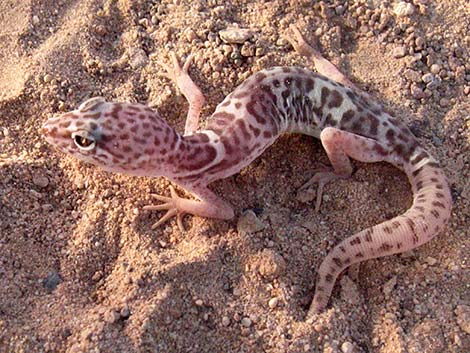 Dark bands wider than light bands: Utah Banded Gecko |
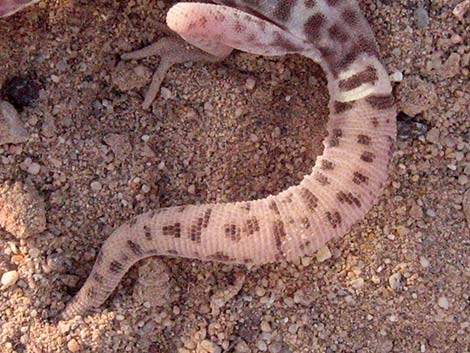 Regenerated tail lacks bands |
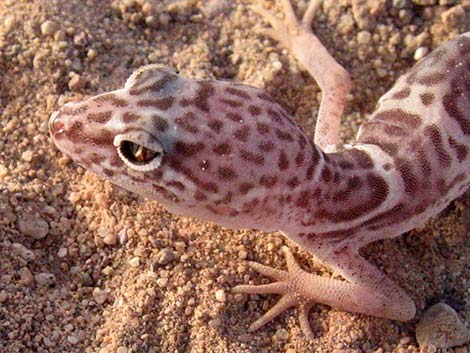 |
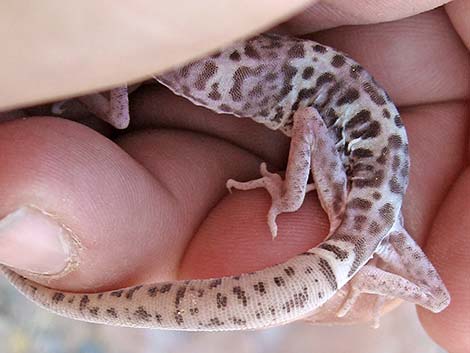 |
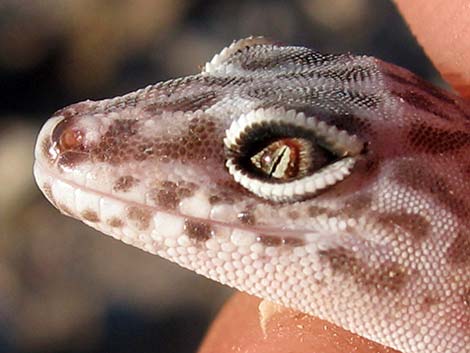 Movable eyelids - open; pupil vertical |
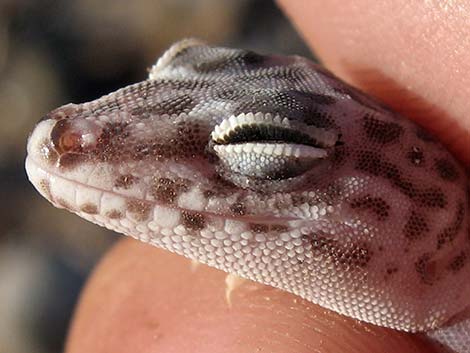 Movable eyelids - closed |
 Western Banded Gecko hiding under my collar |
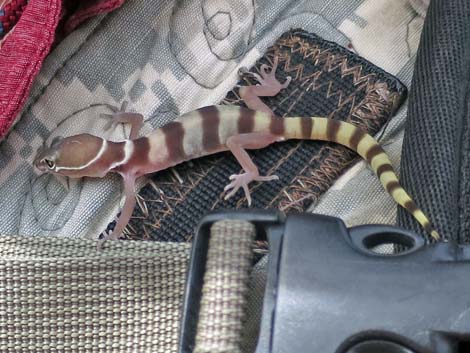 Western Banded Gecko |
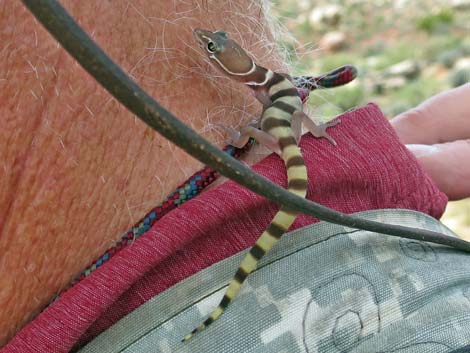 Western Banded Gecko |
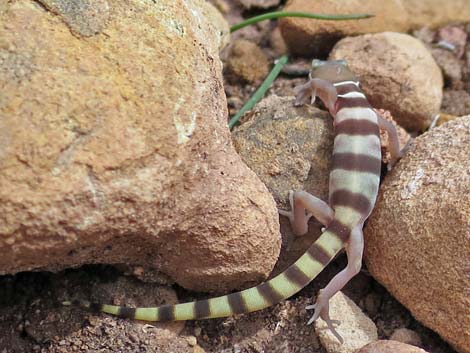 Western Banded Gecko: finally getting away |
Note: All distances, elevations, and other facts are approximate.
![]() ; Last updated 231212
; Last updated 231212
| Lizards Around Las Vegas | Wildlife Around Las Vegas | Glossary | Copyright, Conditions, Disclaimer | Home |